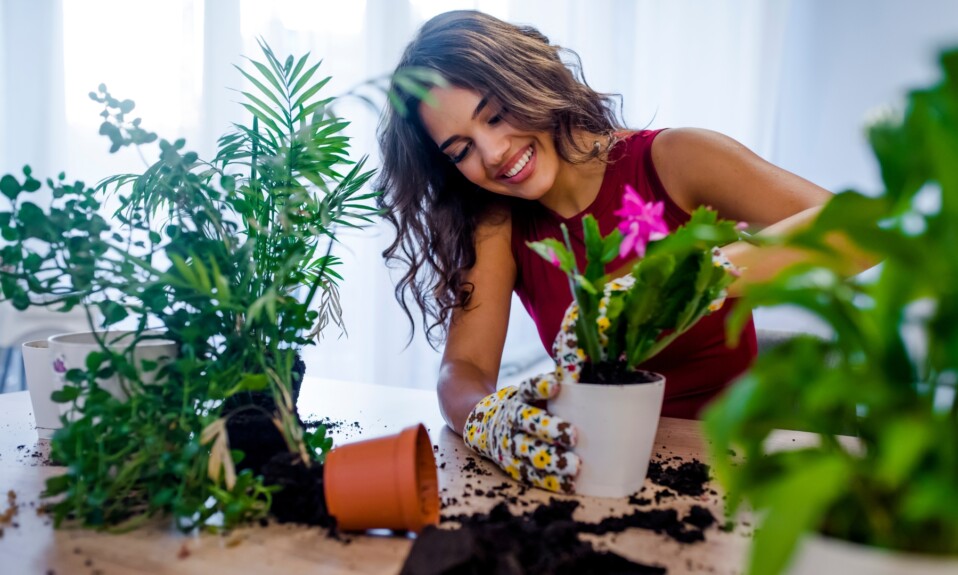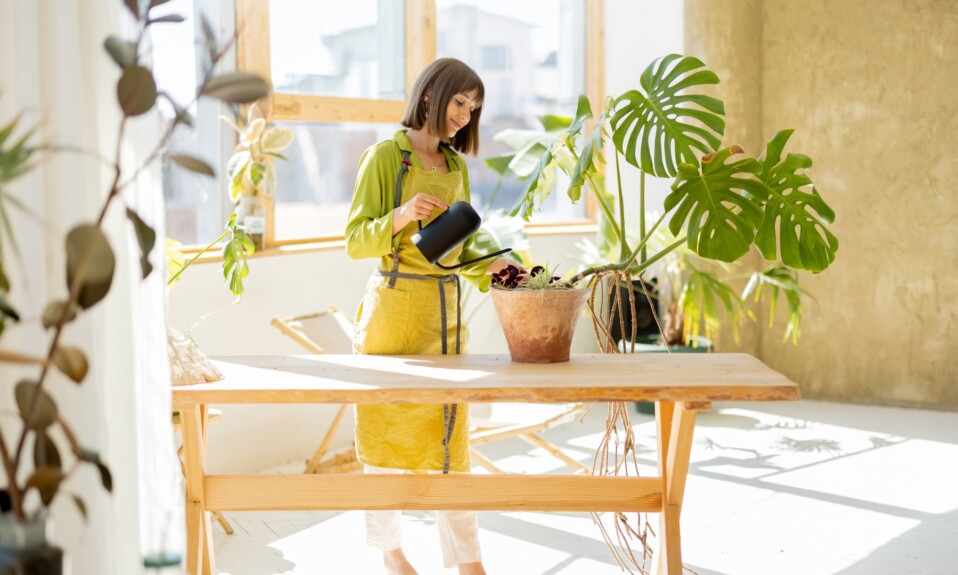Indoor plants hold significant importance for both aesthetic and practical reasons. Beyond their visually pleasing presence, these plants contribute to improved air quality by absorbing pollutants and releasing oxygen. They create a tranquil and refreshing atmosphere, promoting mental well-being and reducing stress. Indoor plants also enhance focus and productivity while fostering a sense of connection to nature, especially in urban environments. Additionally, certain plants have the ability to regulate humidity, making indoor spaces more comfortable. As natural air purifiers, they mitigate the impact of common household pollutants, enhancing overall respiratory health. Even the responsibility of caring for low maintenance indoor plants can instill a sense of routine and nurturing, providing a therapeutic hobby. In essence, indoor plants serve as versatile companions, elevating the ambiance, supporting health, and nurturing a harmonious living environment.
Advantages of Having Indoor Plants
Indoor plants offer numerous advantages, contributing to both physical and mental well-being while enhancing the overall living environment. Here are several benefits of having indoor plants:
- Improved Air Quality: Indoor plants act as natural air purifiers, absorbing pollutants such as formaldehyde and benzene while releasing oxygen. This helps create a healthier indoor atmosphere.
- Enhanced Mental Well-being: The presence of greenery indoors has been linked to reduced stress, anxiety, and depression. Indoor plants promote a sense of calmness and connection to nature, positively impacting mental health.
- Increased Productivity: Studies suggest that the introduction of plants in workspaces can boost concentration and productivity. The visual appeal of greenery contributes to a more pleasant and stimulating environment.
- Humidity Regulation: Certain indoor plants can help regulate humidity levels, preventing indoor air from becoming too dry. This is particularly beneficial in spaces with air conditioning or heating systems.
- Aesthetic Appeal: Indoor plants add visual interest and aesthetic appeal to interior spaces, creating a more inviting and livelier atmosphere. They serve as decorative elements that can complement various interior styles.
- Noise Reduction: Some plants, especially those with large leaves, can absorb and muffle background noise, contributing to a quieter and more peaceful indoor environment.
- Learning and Creativity: Having plants in educational or creative spaces has been associated with increased learning and creativity. They can create a conducive environment for cognitive activities.
- Therapeutic Hobby: Caring for indoor plants provides a fulfilling and low-maintenance hobby. It encourages a sense of responsibility and nurturance, fostering a positive emotional connection.
- Biophilic Connection: Indoor plants fulfill the human need for a connection to nature, even in urban settings. This biophilic element contributes to a sense of well-being and harmony in indoor spaces.
- Temperature Regulation: Indoor plants can have a mild cooling effect in indoor spaces through a process called transpiration, where they release water vapor, helping to moderate room temperatures.
Recommended: Surprising Health Benefits of Having Indoor Plants at Home
Low-Maintenance Indoor Plants
Low-maintenance indoor plants are ideal for individuals who want to enjoy the benefits of greenery without investing significant time and effort in their care. Here are some low-maintenance indoor plants:
- Snake Plant (Sansevieria): Known for its durability, the snake plant thrives in various light conditions and requires minimal watering. It’s excellent for improving air quality.
- ZZ Plant (Zamioculcas zamiifolia): ZZ plants are hardy and can tolerate low light conditions. They have a unique appearance with glossy, dark green leaves and require infrequent watering.
- Pothos (Epipremnum aureum): Pothos is a versatile and adaptable plant that can thrive in low light. It’s forgiving of irregular watering and is known for its trailing vines.
- Jade Plant (Crassula ovata): Known for their low-maintenance characteristics, Jade plants need very less water may be once in two weeks. Jade plants thrive in bright, indirect light but can tolerate some direct sunlight. Jade plants are comfortable in average room temperatures and can withstand slight fluctuations.
- Spider Plant (Chlorophytum comosum): Spider plants are resilient and easy to care for. They adapt to various light conditions and produce “pups” that can be repotted to grow new plants.
- Peace Lily (Spathiphyllum): Peace lilies are known for their air-purifying qualities. They prefer indirect light, and their watering needs are minimal, with the ability to tolerate periods of drought.
- Aloe Vera: Aloe vera is a succulent that requires infrequent watering and thrives in bright, indirect light. Its gel has medicinal properties and can be used for various skincare purposes, which is one of the best low-maintenance indoor plants.
- Nerve Plant (Fittonia albivenis): Fittonia, commonly known as the nerve plant, is a low-maintenance indoor plant known for its striking foliage. These plants require moderate level of soil moisture and thrive in bright, indirect light. They can tolerate lower light conditions and appreciate higher humidity levels, which makes them well-suited for bathrooms or kitchens.
- Cast Iron Plant (Aspidistra elatior): True to its name, the cast iron plant is extremely resilient and can tolerate low light, neglect, and irregular watering.
- Succulents (e.g., Echeveria, Haworthia): Succulents are well-known for their low-maintenance nature. They store water in their leaves, making them drought-tolerant and suitable for various light conditions.
- Chinese Evergreen (Aglaonema): Chinese evergreens are adaptable to low light and have attractive foliage. They require minimal care, making them suitable for beginners.
- Bamboo Palm (Chamaedorea seifrizii): Bamboo palms are effective at purifying the air and can thrive in low light. They also add a tropical touch to indoor spaces.
Recommended: Top 6 Indoor Plants You Should Go for
Beneficial Tips to Help Your Indoor Plants Grow Healthy
Maintaining healthy indoor plants involves providing the right conditions and care. Here are some beneficial tips for ensuring the well-being and growth of your indoor plants:
- Lighting: Understand the light requirements of your plants and place them accordingly. Most indoor plants thrive in bright, indirect light, while some may tolerate low light conditions. Rotate your plants occasionally to ensure even exposure to light.
- Watering: Overwatering is a common issue. Allow the top inch of soil to dry out before watering again. Use well-draining soil and pots with drainage holes to prevent waterlogged roots. Be mindful of seasonal changes, as some plants may need less water in winter.
- Humidity: Indoor plants, especially tropical ones, benefit from increased humidity. Grouping plants together, using a humidifier, or misting the leaves can help create a more humid environment.
- Temperature: Most indoor plants prefer consistent temperatures. Avoid placing them near drafts, radiators, or air conditioning vents. Protect plants from temperature extremes, as sudden changes can stress them.
- Soil Quality: Even for low-maintenance indoor plants, always use a well-balanced and well-draining potting mix suitable for your plant species. Consider repotting every 1-2 years to refresh the soil and provide additional nutrients.
- Fertilization: Feed your plants with a balanced liquid fertilizer during the growing season (spring and summer). Follow the recommended dosage on the fertilizer packaging, and avoid over-fertilizing, as this can harm the plants.
- Pruning: Regularly prune your plants to remove dead or yellowing leaves and encourage bushier growth. Pinching back growing tips can promote branching and a fuller appearance.
- Pest Management: Keep an eye out for pests such as spider mites, aphids, or scale. Regularly inspect your plants, and if pests are present, treat them promptly with insecticidal soap or neem oil.
- Support and Staking: Use stakes or supports for tall or trailing plants to prevent them from becoming leggy or toppling over. This is particularly important for plants like peace lilies or tall snake plants.
- Cleaning: Wipe the leaves of your plants with a damp cloth to remove dust. Clean leaves allow better light absorption and help prevent pest infestations.
- Observation: Pay attention to your plants and learn to recognize signs of stress or health issues. Adjust care routines accordingly, and be proactive in addressing any problems.
Remember that each plant has unique care requirements, so it’s essential to research the specific needs of your plants, even if they are low-maintenance indoor plants. By providing proper care and attention, you can enjoy thriving and healthy indoor greenery.
You may like this









